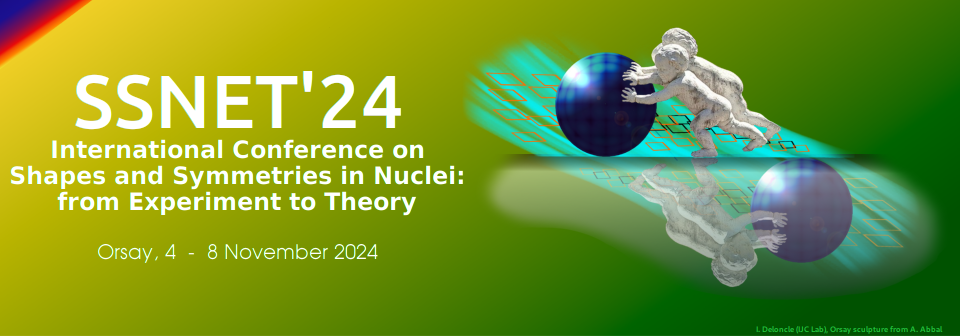Orateur
Description
Nuclear collectivity has been thought to emerge through spherical quadrupole vibrations, especially in transitional regions between shell closures and deformed nuclei. The Cd isotopes ($Z=48$) were long considered textbook examples of vibrational nuclei. However, in recent years this narrative has been challenged, with elecromagnetic matrix element data showing major discrepancies with the vibrational model [1]. Results from multi-step Coulomb excitation data of $^{106,116}$Cd on $^{208}$Pb will be presented [2]. Excitation of many low-lying states, including two excited $0^+$ states was observed. The experimental $E2$ matrix elements are used to construct $E2$ rotational invariants for the ground- and low-lying excited states, providing a model independent view of nuclear shapes in the Cd isotopes. The rotational invariant behaviour as a function of spin can be compared to, and test state-of-the-art nuclear models. The experiments were performed using the GRETINA-CHICO2 arrays at Argonne National Laboratory, using the ATLAS accelerator.
[1] P. E. Garrett, T. R. Rodriguez, A. Diaz Varela et al., Phys. Rev. Lett. 123,142502 (2019)
[2] T. J. Gray, J. M. Allmond, R. V. F. Janssens et al., Phys. Lett. B 834, 137446 (2022)

